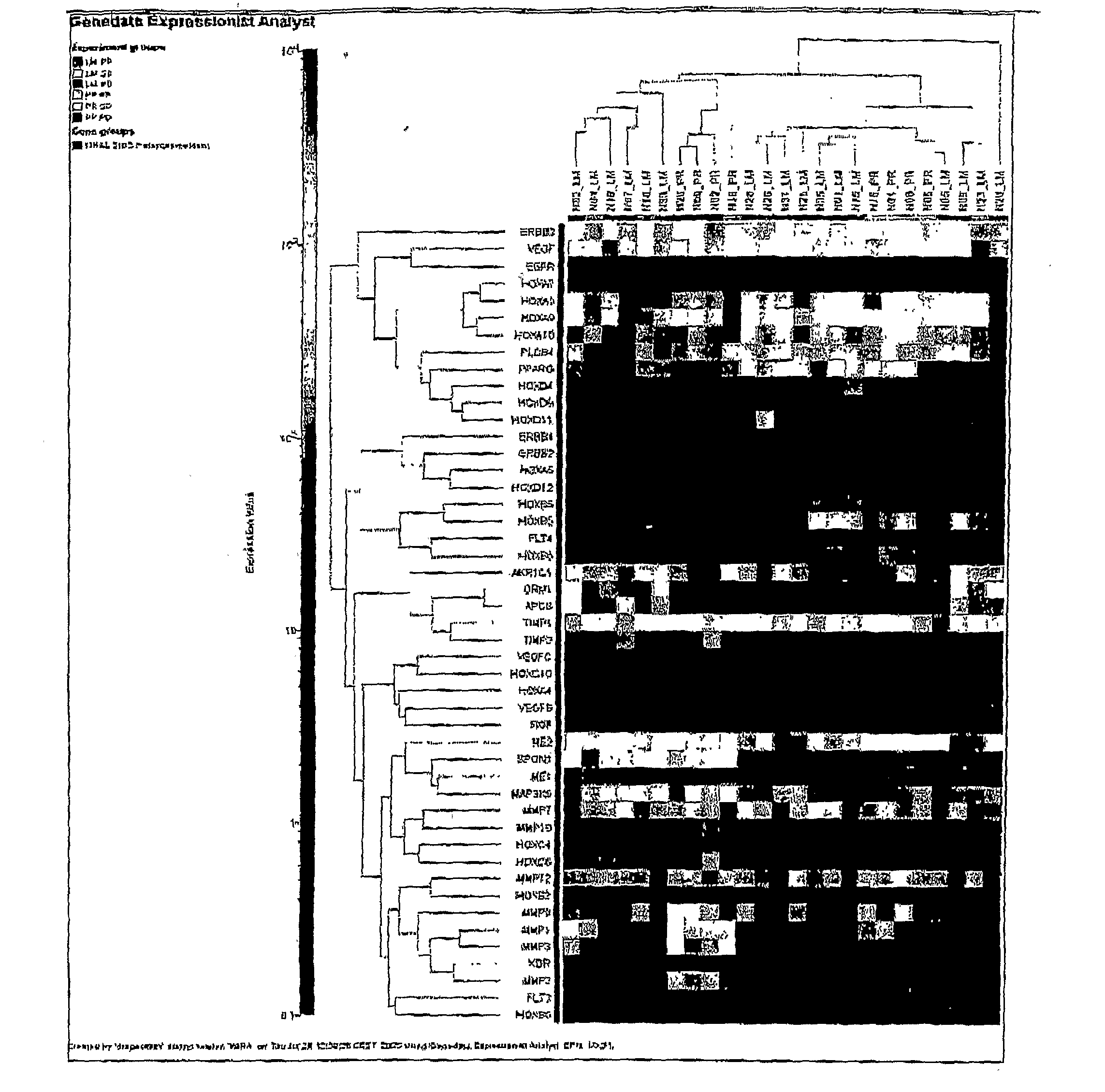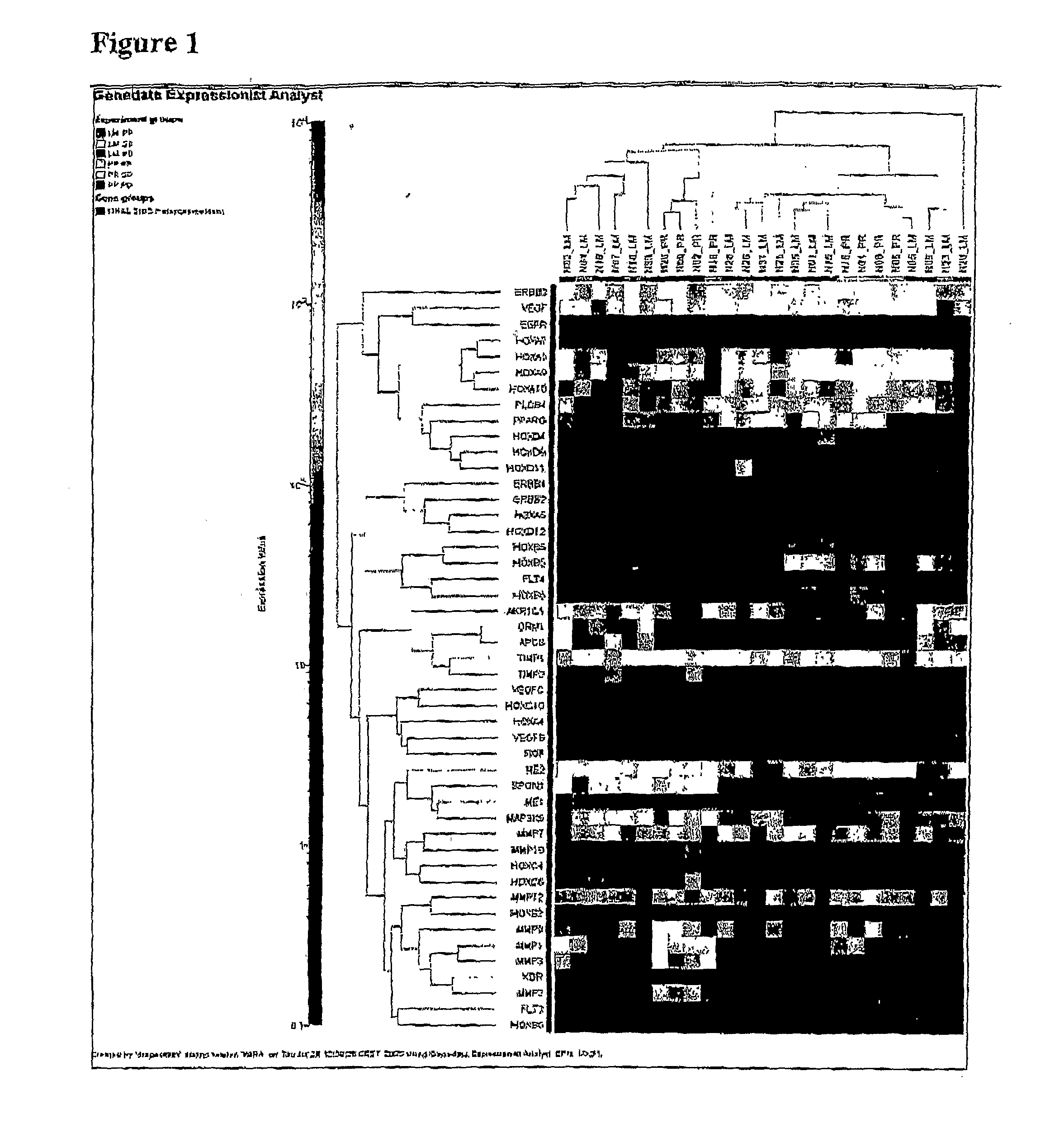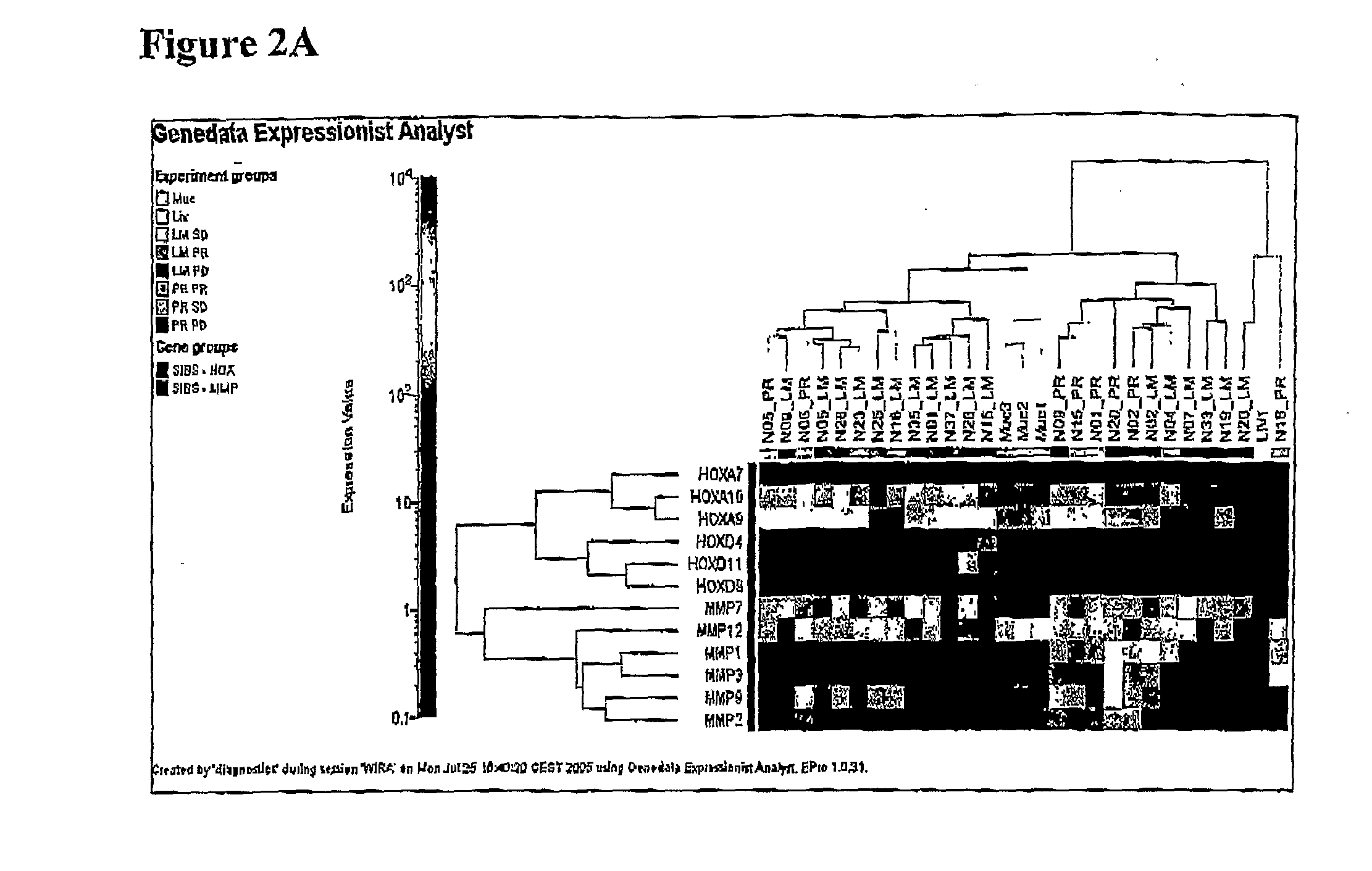Methods and Kits for the Prediction of Therapeutic Success, Recurrence Free and Overall Survival in Cancer Therapies
a cancer therapy and prognosis technology, applied in combinational chemistry, biochemistry apparatus and processes, library screening, etc., can solve the problems of many will fail in treatment success, the exact molecular mechanisms underlying tumor growth, local invasion, angiogenesis, intravasation and finally metastasis remain poorly understood, and the relevance of these mechanisms for therapy success or failure has not been resolved
- Summary
- Abstract
- Description
- Claims
- Application Information
AI Technical Summary
Benefits of technology
Problems solved by technology
Method used
Image
Examples
example 1
Patient and Tumor Characteristics
[0332]The ethics committee of the University of Erlangen-Nuremberg approved the study protocols describing sample collection and gene profiling. Written consent was obtained from eligible patients, the research was conducted in accordance with the principles of the Declaration of Helsinki.
[0333]Biopsy samples from the primary tumor and one or more synchronous liver metastases were collected intraoperatively from 19 patients with UICC stage IV colorectal carcinoma at the time of resection of the primary tumor. Primary carcinoma was confirmed histologically. Histological confirmation was also obtained for synchronous liver metastasis. When metachronous liver metastasis was identified, histological confirmation was only pursued when imaging techniques (spiral computerized tomography (CT) of the abdomen or MRT of the liver) did not show clear results.
[0334]Patients received first-line chemotherapy, consisting of a weekly 1-2 hour infusion of folinic acid...
example 2
Expression Analysis of Primary and Metastatic Tumor Tissue by Analysis of Paraffin-Embedded Tumor Tissue
SUMMARY
[0366]Paraffin embedded, Formalin-fixed tissues of surgical resectates of patient as described in Example 1 were analyzed and neoplastic disease marker level values were determined by qRT-PCR techniques and correlated with patient survival.
Expression Profiling Utilizing Quantitative Kinetic RT-PCR
[0367]RNA was isolated from paraffin-embedded, formalin-fixed tissues (=FFPE tissues). Those skilled in the art are able to perform RNA extraction procedures. For example, total RNA from a 5 to 10 μm curl of FFPE tumor tissue can be extracted using the High Pure RNA Paraffin Kit (Roche, Basel, Switzerland), quantified by the Ribogreen RNA Quantitation Assay (Molecular Probes, Eugene, Oreg.) and qualified by real-time fluorescence RT-PCR of a fragment of RPL37A. In general 0.5 to 2 ng RNA of each qualified RNA extraction was assayed by qRT-PCR as described below. For a detailed anal...
example 3
Statistical Relevance of Candidate Genes Differentially Expressed in Cancers for Overall Survival Discrimination
[0379]While as those algorithms described can be implemented in a certain kernel to classify samples according to their specific gene expression into two classes another approach can be taken to predict class membership by implementation of a k-NN classification. The method of k-Nearest Neighbors (k-NN), proposed by T. M. Cover and P. E. Hart, an important approach to nonparametric classification, is quite easy and efficient. Partly because of its perfect mathematical theory, NN method develops into several variations. As we know, if we have infinitely many sample points, then the density estimates converge to the actual density function. The classifier becomes the Bayesian classifier if the large-scale sample is provided. But in practice, given a small sample, the Bayesian classifier usually fails in the estimation of the Bayes error especially in a high-dimensional space...
PUM
| Property | Measurement | Unit |
|---|---|---|
| Length | aaaaa | aaaaa |
| Composition | aaaaa | aaaaa |
| Therapeutic | aaaaa | aaaaa |
Abstract
Description
Claims
Application Information
 Login to View More
Login to View More - R&D
- Intellectual Property
- Life Sciences
- Materials
- Tech Scout
- Unparalleled Data Quality
- Higher Quality Content
- 60% Fewer Hallucinations
Browse by: Latest US Patents, China's latest patents, Technical Efficacy Thesaurus, Application Domain, Technology Topic, Popular Technical Reports.
© 2025 PatSnap. All rights reserved.Legal|Privacy policy|Modern Slavery Act Transparency Statement|Sitemap|About US| Contact US: help@patsnap.com



